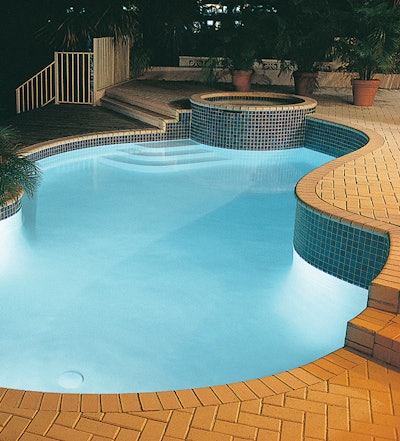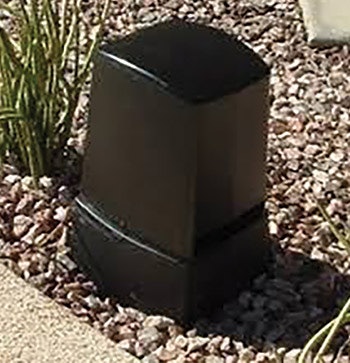
 There are hundreds of thousands of Fiberstars illuminator boxes, such as this one, on poolside landscaping across the country.
There are hundreds of thousands of Fiberstars illuminator boxes, such as this one, on poolside landscaping across the country.
The industry's economic boom in the COVID era has had different components. Consumers are creating new venues for relaxation, such as hot tub decks and pools, but they're also looking to make minor upgrades to their existing backyard retreats. Service companies report that small problems that have been left unattended are being addressed as never before by homeowners wanting to make their backyards more attractive and functional.
One renovation that makes sense to homeowners now is the replacement of aging Fiberstars lighting systems with LED. Many Fiberstars lighting systems were installed in the 1990s and 2000s — it was cutting-edge pool lighting technology at the time — and some of these are showing the effect of the years.
In addition to replacing ineffective or inoperable lighting equipment, a conversion to LED offers considerable savings in power usage due to the greater efficiency of LED lights.
The Fiberstar system is an interesting design: An extremely bright metal halide lamp is housed within a black box near the pool. The intense light literally shines into the ends of fiber-optic cables, is transmitted down the length of the cable, and comes out the other end into the pool. This contrasts with a simple electric-powered light in a pool wall niche.
"Twenty years ago, Fiberstars was sort of like the bee's knees in pool lighting technology," says Greg Russell, director of product management at S.R. Smith, which acquired Fiberstars in 2013. "A lot of Fiberstars systems were installed — maybe 500,000 installations all together — and each one has that metal halide illuminator box sticking out in the yard somewhere. It's almost never by the pool pad. It's usually close to the pool just to shorten the run of fiber-optic cable to the wall of the pool.
RELATED: LED Lights Just Makes Cents
"But unfortunately, fiber just fails over time," says Russell, "and if it stops functioning or the customer wants to change it, it's a much bigger project to run new electrical conduit from the illuminator box back to the pad or wherever you want to put the new transformer."
Thus the fiber-to-LED conversion kit, which uses the same size box as the old Fiberstars illuminator. Conversion is a matter of taking the old illuminator off, pulling out the fi ber, pulling new wires through the existing conduit to the pool and then wiring it back up so you can use the same 120 power that's already there for the illuminator. You put in the new lights in the existing niche at the pool wall, and then you're back in business with LED lights.
"You've already got the illuminator box out there," says Roland Dezentje, a 40-year industry veteran, who actually installed fiber optic systems in pools decades ago and recently did the conversion, "and you're replacing it with the box from S.R. Smith and it's the same size, and you've already got the wiring out there for AC. And so it was a no brainer, and it was very easy. Very little additional wiring was required."











































